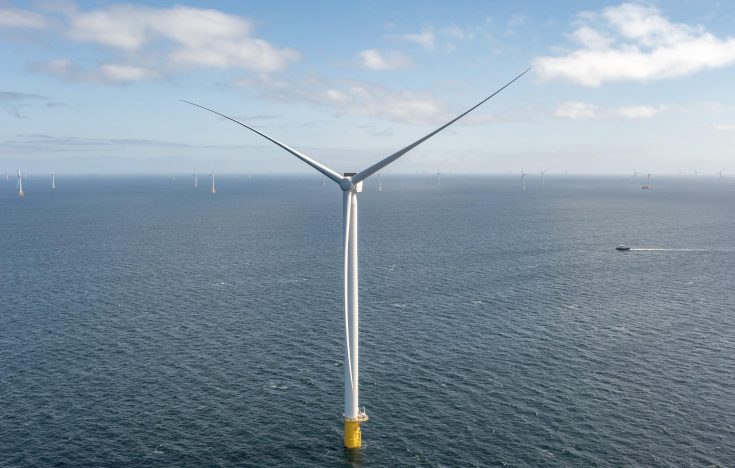©Moray West
Offshore wind is one of the most promising avenues to meet the world’s ambitious climate goals, with production set to increase fivefold over the next decade. In the UK, where offshore wind is expected to supply at least one third of the electricity by 2030, Ocean Winds has been leading the charge since 2019. Ocean Winds is the result of a 2020 joint venture between EDP Renewables (EDPR) and ENGIE. Both companies share the vision in which renewables, particularly offshore wind, play a key role in the global energy transition.

Its Moray West offshore wind farm – a pioneering project in the Moray Firth off the northeast coast of Scotland due to be fully operational in 2025 – boasts one of the biggest turbines in the world, a new model built by Siemens Gamesa. It will have 60 wind turbines with a total generating capacity of 882 MW, equivalent to the annual electricity consumption of more than 1.3 million homes, about half the Scottish population.
Ocean Winds is driving technological innovation to develop new sites that would previously not have been considered. “It’s really pushing the boundaries of what’s possible in offshore wind,” says James Munro-Brian, the UK Finance Manager for Ocean Winds, which owns a 95% stake in the Moray West project.
“At the moment, we are one of the major developers worldwide with a portfolio of 16 secured wind offshore projects representing around 18 GW,” says Ernesto Vargas Espinosa, Structured & Corporate Finance Director at Ocean Winds.
Innovative financing with Corporate Power Purchase Agreements
BNP Paribas supported the Moray West project as part of an innovative GBP2 billion financing arrangement that largely relies on Corporate Power Purchase Agreements (CPPAs). These agreements with long-term strategic partners are used for the sale of some of the project’s electricity, rather than solely relying only on fixed prices guaranteed by the state. They account for the sale of more than half of its output, and a Contract for Difference (CfD) – a contractual mechanism guaranteeing a set price for electricity to incentivise investments in renewable energy projects in the UK – was secured for another third of the installed capacity.
BNP Paribas was Mandated Lead Arranger and Hedging Bank in the project finance scheme alongside other banks, with loan repayments made only from cash flow generated by the project.
“The banks are very important to the financing of an offshore wind farm: they really challenge the assumptions to ensure that the project is in the best place it possibly can be, with the most lending possible. Many hours are spent in making sure that the project can finance itself and also repay the debt that we’re about to raise,” says Vargas Espinosa.
“BNP Paribas brings a lot of experience with them in investing in offshore wind. And they also bring a lot of other banks with them. So if BNP Paribas is happy, others will be happy too, and we will end up with a better project,” he adds. He points to BNP Paribas’ solid track record in project finance and its broad reach as an international bank when explaining why Ocean Winds chose it as a lender, as well as its overall banking expertise and knowledge of the renewables sector in particular.
A long-term banking partner
BNP Paribas has supported Ocean Winds since it was created in 2020, with treasury management and foreign exchange transactions. By 2023, the Bank had been involved in two other project finance deals with Ocean Winds in France, together worth EUR5.2 billion, in addition to Moray West.
“What I expect from our banking partners is to support us in pushing the envelope to increase the size of debt funding, to enable us to increase the size of projects and the size of the turbines,” says Munro-Brian. “With its expertise, BNP Paribas is supporting us in our journey to make offshore wind energy mainstream.”
